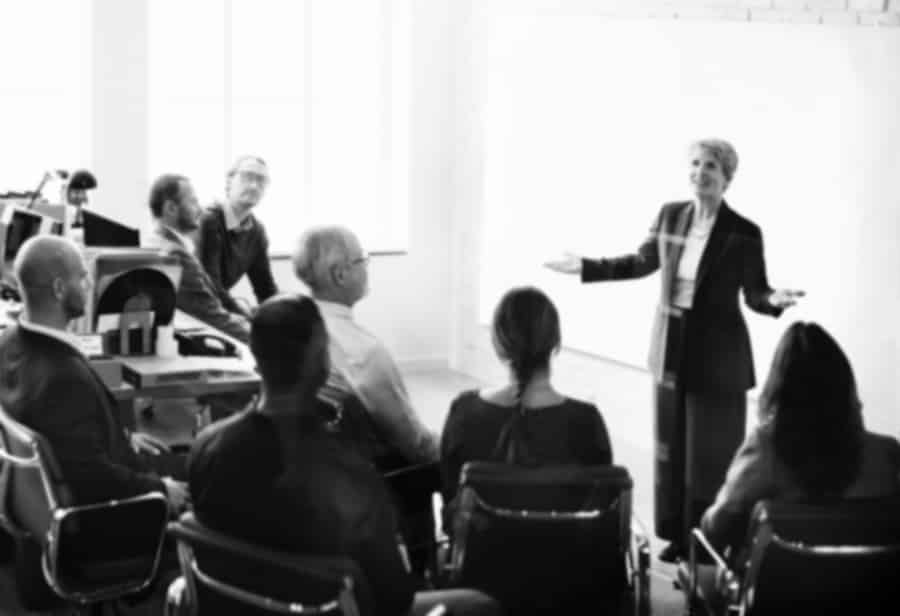To Win the Future, Legacy Organizations Must Innovate in 3 New and Different Ways

The world is no longer local and linear. It’s global and exponential, thanks to technological achievements. Established organizations, those of a certain size and age — sometimes called legacy organizations — no longer consider close competitors as their greatest threat. They fear the startups, which, although they live in metaphorical garages and comparatively few take off, have an innovation power that established organizations only dream of possessing.
The hurdle established organizations can’t get over is that ideas are a dime a dozen and its hard time turning them into concrete value. This is because the organizations lack a well-functioning innovation design.
Established organizations have all the resources — money, customers, data, employees, suppliers, partners and infrastructure — putting them in a far better position to transform new ideas into value-creating, successful services. But they tend to do one of two things when confronting the changing world: Either they dismiss whatever is new and different because it’s difficult to fit into existing strategies, or they recognize that they should explore new strategies, but don’t do it thoroughly, ambitiously and strategically enough.
One aspect holding organizations back is their lack of employees with the capabilities to participate in major organizational transformations. A global survey found that 76 percent of leaders believed their employees didn’t have the right capabilities to handle future corporate digitization.
Established organizations are often experts when it comes to planning for traditional product development. Innovation, though, isn’t limited to this, and isn’t something relevant only to product development teams. It’s applicable to the entire organization. Therefore, when it comes to innovation in a modern age, these organizations need new rules of engagement.
Innovation for established organizations can be divided into three different tracks:
- Optimizing. With optimizing innovation, companies improve on the past. For example, when Gillette adds a fourth blade to its three-blade razor, it’s optimizing. Continuous optimization, both in the operational and customer realm, is good and important. But it’s far from enough to remain a leader even just a few years from now. The more extra blades are added to the razor, the less value each new blade creates.
When marketing becomes the most significant thing about your product, or you’re spending excessive amounts on market analyses to identify how to generate new payoffs communicating what’s virtually the same product, then you’re reaching the point where you have no optimization options left for the product or service. - Augmenting. Augmenting innovation is about upgrading your core, whether it’s a case of upgrading products or internal processes. Most digital transformation processes in organizations fall under the category of augmenting innovation. It can mean going from analog to digital. This is followed by new upgrades that will, in principle, be infinite in number, as there will always be new technological achievements that can be used to create better solutions.
The next augmenting phase after moving into the digital world could be implementing artificial intelligence at the core of the organization, which many forward-looking companies are focusing on these days. For some organizations, an exploration of how certain services or processes could become “blockchain first” would be relevant. And so on.
Augmenting innovation, and innovation overall, should not be thought of as a marathon, but as an ultra-marathon. Every day as you cross the finish line, you know that tomorrow brings a new finish line. - Mutating. This is where you’re no longer improving the past, as with optimizing innovation, or preparing the future, as with augmenting innovation, but where you invent the future. With mutating innovation, you’re working to challenge what currently exists. The business that maintains, or exceeds, its level of success 10, 20 and 30 years from now will have mutated and look significantly different than it does today.

Mutating innovation involves launching initiatives for which the existing organization currently doesn’t have the resources to implement. It requires different people, capabilities and, possibly, physical spaces. For example, Emerson, which develops climate technology among other things, has a 40,000-square-foot test laboratory at the University of Dayton, where it has established test environments for private homes, a supermarket, a commercial kitchen and a data center to prototype services that must utilize new technologies and business models.
Engaging in mutating innovation often requires teaching your investors and shareholders to take the long view and think beyond the next few quarters.
Creating separate entities to explore undiscovered opportunities, often called X divisions, aren’t a new thing, but their proliferation has accelerated sharply in recent years. Ford, and most other large automakers, are investing in both augmenting and mutating innovation by both upgrading and challenging their core. Energy companies worldwide are mutating by focusing on sustainable energy solutions apart from their legacy businesses.
Established organizations shouldn’t wait for the problems to become enormous before upgrading their innovation ambitions. On the contrary, they should act while things are going well and they have the resources to future-proof their organization’s existence.
Written by Kris Østergaard.
Have you read?
1. 4 Things You Need to Learn About Leadership Before Stepping Into the CEO Role by Christine Alemany.
2. No-Fee Business Credit Cards: Are They Right For You? by Jared Hecht.
3. Europe’s Top Business Schools For 2019.
4. Best Food Destinations In China.
5. Best Luxury Sports Cars For World-Class Businessmen, 2019.
Bring the best of the CEOWORLD magazine's global journalism to audiences in the United States and around the world. - Add CEOWORLD magazine to your Google News feed.
Follow CEOWORLD magazine headlines on: Google News, LinkedIn, Twitter, and Facebook.
Copyright 2025 The CEOWORLD magazine. All rights reserved. This material (and any extract from it) must not be copied, redistributed or placed on any website, without CEOWORLD magazine' prior written consent. For media queries, please contact: info@ceoworld.biz








